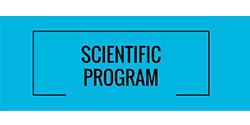Liubov Kost
Shemyakin-Ovchinnikov Institute of Bioorganic Chemistry-RAS, Russia
Title: Towards the improvement of red voltage sensor
Biography
Biography: Liubov Kost
Abstract
Genetically encoded voltage indicators (GEVIs) represent a promising tool for the neurophysiology experiments. Namely, they would become a probe of choice for electric activity monitoring from the specifically targeted cell populations or even at the live organism level. However, GEVIs practical characteristics remain suboptimal for in vivo-studies and are being permanently improved. GEVI molecule usually consists of the three structural units: voltage-sensing domain, fluorescent protein and amino acid linker between them. Generally, each of the mentioned units can determine the performance of a particular indicator, and thus engineering of the improved GEVI could imply the modification of any part of it. Here we use two parallel strategies to enhance VSD-FR189-188, recently described red fluorescent protein-based voltage indicator. On one hand, we have modified amino acid content and length of the linker which connects Ci-VSP voltage-sensing domain with the FusionRed-derived fluorescent unit. Our experiments revealed that some variants with shorter linker demonstrated dramatically enhanced (up to 30-fold) responsiveness relative to the parental GEVI, though almost unchanged or slightly decreased dynamic range. To address the modest dynamic range issue, we implemented the second strategy implying the fluorescent core modification. FusionRed protein, which forms VSD-FR189-188 fluorescent core, is known to have a partially cleaved polypeptide chain. We supposed that the chain break might decrease the chromophore conformational sensitivity within the GEVI construct thus limiting response dynamic range. X-ray data on the FusionRed structure obtained recently point to a key role of Cys158 residue in the bond cleavage. Based on this hypothesis, we designed FusionRed mutants (C158L, A157/C158L) which remain spectrally similar to the original protein but didn’t show chain cleavage. These mutants are of interest as new fluorescent units for GEVIs.

